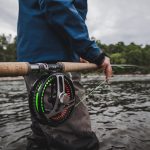This week, Backcountry.com donated $12,000 of high-quality outdoor gear in continued support of the start-up phase of Pacific Mountain Institute’s new Gear to Grow project. This is the second sizable gear donation to the project in as many months and represents what could be considered seed funding for Gear to Grow’s unique pilot program.
Gear to Grow is a Salt Lake City-based 501(c)(3) organization that brokers gear donations between donors and non-profit organizations, placing outdoor gear donated by retailers and manufacturers into the hands of organizations whose missions involve getting more people into the outdoors more often.
In Backcountry.com’s case, that amounts to crates full of returned good-as-new gear that is no longer marketable at full retail price going to Gear to Grow’s beneficiaries: Leave No Trace, cityWILD, Big City Mountaineers, and Bay Area Wilderness Training.
“Gear to Grow is a great way for Backcountry.com to support the groups that are working to get more people engaged in the outdoors,” said Amy Burns, Backcountry.com’s returns supervisor. “One shipment to Gear to Grow allows us to spread the love to many projects, and we’re confident that the gear is going to worthy and needy causes aligned with Backcountry.com employee’s interests.”
This week’s donation of $12,000 worth of outdoor gear comes on the heels of an October donation of 1,200 Broner hats. The hats were “snapped up” by the donor organizations in less than a week, according to the organizations executive director J.T. Vonlunen, and were used in support of initiatives such as Leave No Trace’s Winter Fundraiser campaign.
“Clearly, there is a great deal of demand by non-profits for any kinds of contributions. But knowing the kind of people who traditionally support these groups, gear is still king and the more they can get their hands on the better,” Vonlunen said. “Backcountry.com is an industry leader in many ways and we feel fortunate that they have given us the kind of support that allows us to start fulfilling our mission on a larger scale.”
Gear to Grow currently has six non-profit beneficiary organizations and Vonlunen says that he hopes to increase both the number of donating parties and receiving parties in the year ahead as results of the pilot program phase of the project are made available.
“First we needed to prove that the model works for both donors and the beneficiaries, and now that we know it does we’ll be more proactive in reaching out to both sides of the equation to scale Gear to Grow,” said Vonlunen.















